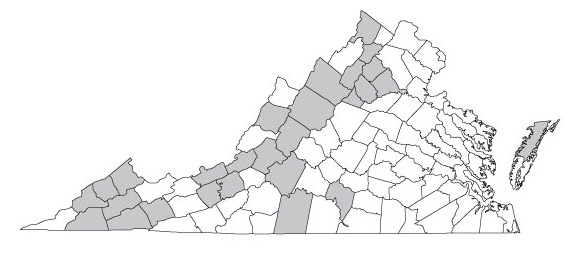Virginia Land Snails
.jpg)
.jpg)
Photo(s): Views of a Glyphyalinia rhoadsi shell by Jeff Nekola ©. Note that the close radial grooves continue onto the underside of the shell.
Click photo(s) to enlarge.
Glyphyalinia rhoadsi (Pilsbry, 1899)
Family: Zonitidae
Common name: Sculpted Glyph
Identification
Width: ≈4.7 mm
Height: ≈2.5 mm
Whorls: 4
Glyphyalinia rhoadsi is average-sized for its genus. Its shell is depressed with a nearly flat apex and whorls that increase relatively rapidly in size. The final whorl does not increase more rapidly than previous whorls. The umbilicus is about one sixth to one seventh the shell width. The shiny and translucent shell is sculptured with closely spaced narrow indentations that run parallel to the indistinct growth lines. These grooves extend from the apical surface to the umbilicus and are regularly spaced except on the last quarter whorl where they are crowded and less regularly spaced. In addition there is sometimes microscopic sculpture of very weak incised spiral lines. The shell is uniformly translucent light-brown.
The body of this glyph is pale. In its reproductive anatomy, the apex of the penis has circular pilasters as in species of Nesovitrea.
Ecology
This animal is found in leaf litter in upland forests and is tolerant of acidic as well as neutral to basic soils (Nekola, 2010).
Taxonomy
Synonyms for this species are Retinella rhoadsi and Vitrea rhoadsi.
Distribution
Glyphyalinia rhoadsi ranges from Quebec to northern Georgia and west to Wisconsin. In Virginia the species is widespread in the Ridge and Valley with scattered populations on the Piedmont.
NatureServe Global Rank: G5
NatureServe State Rank: S4
John Slapcinsky 10/2012
Range Map



